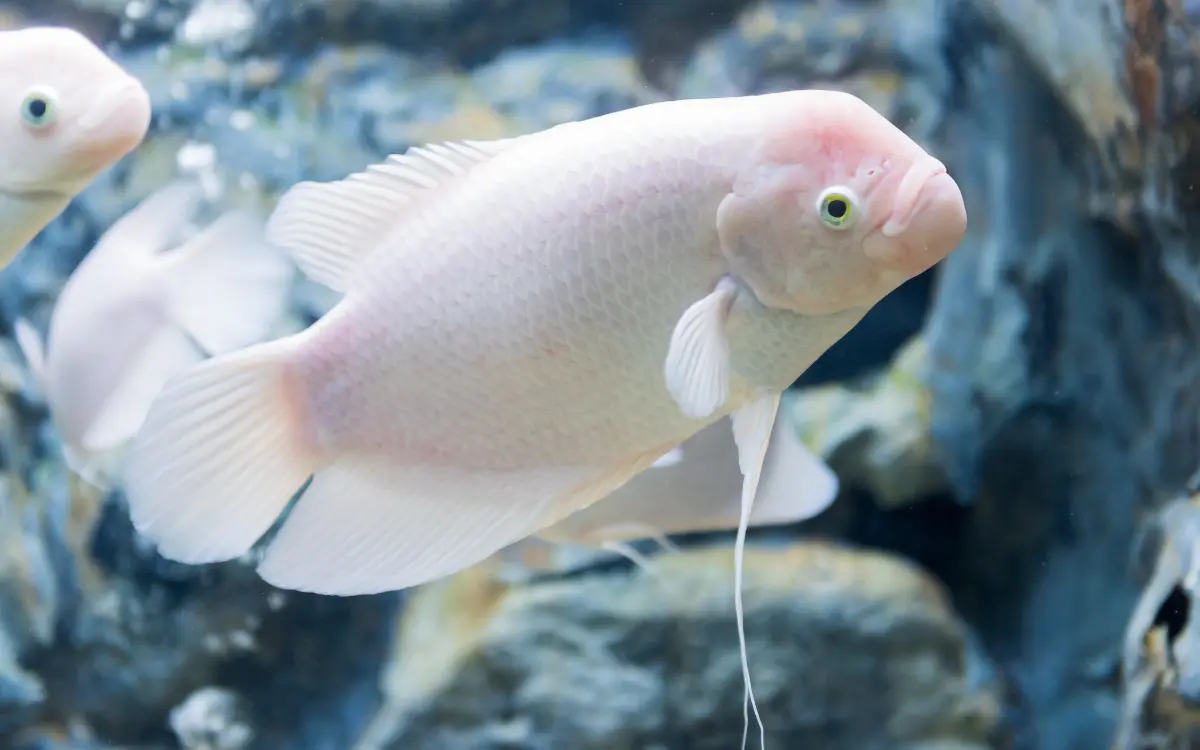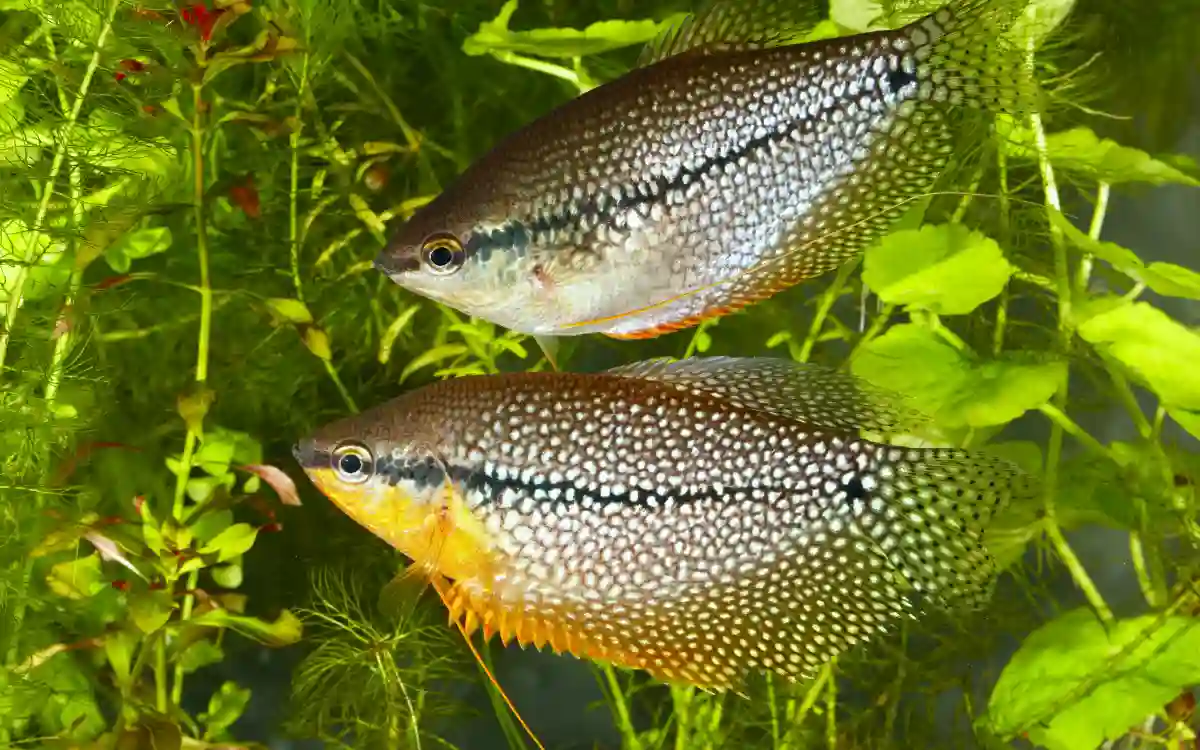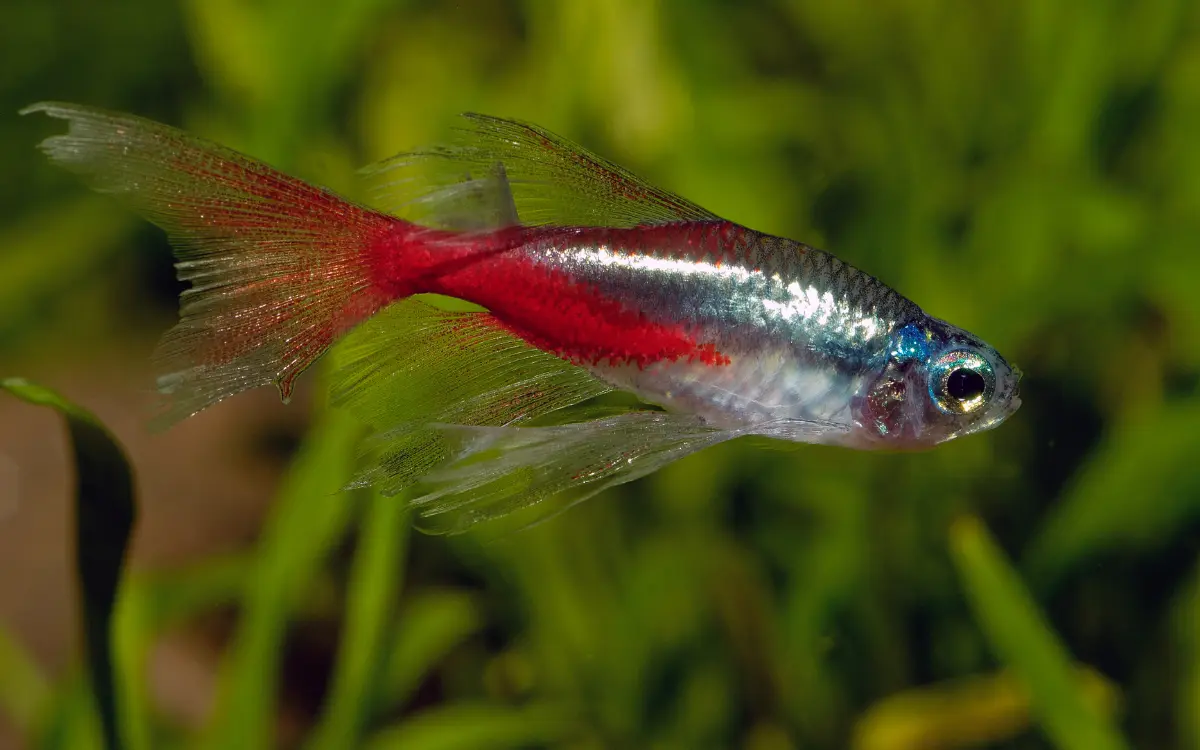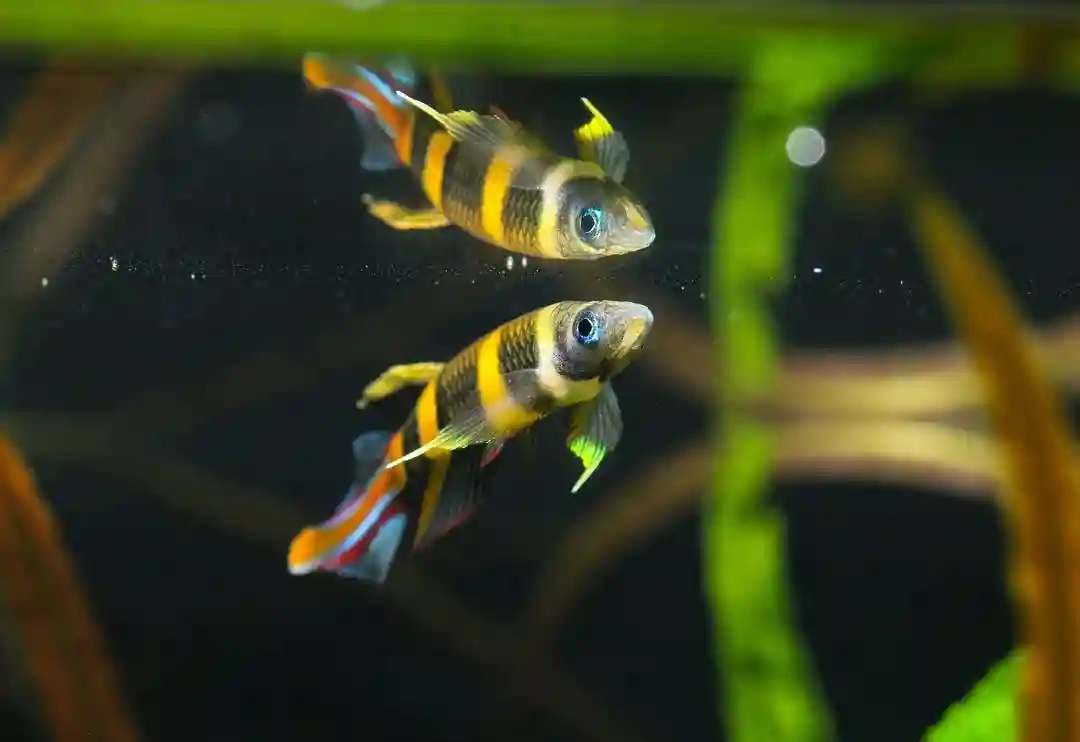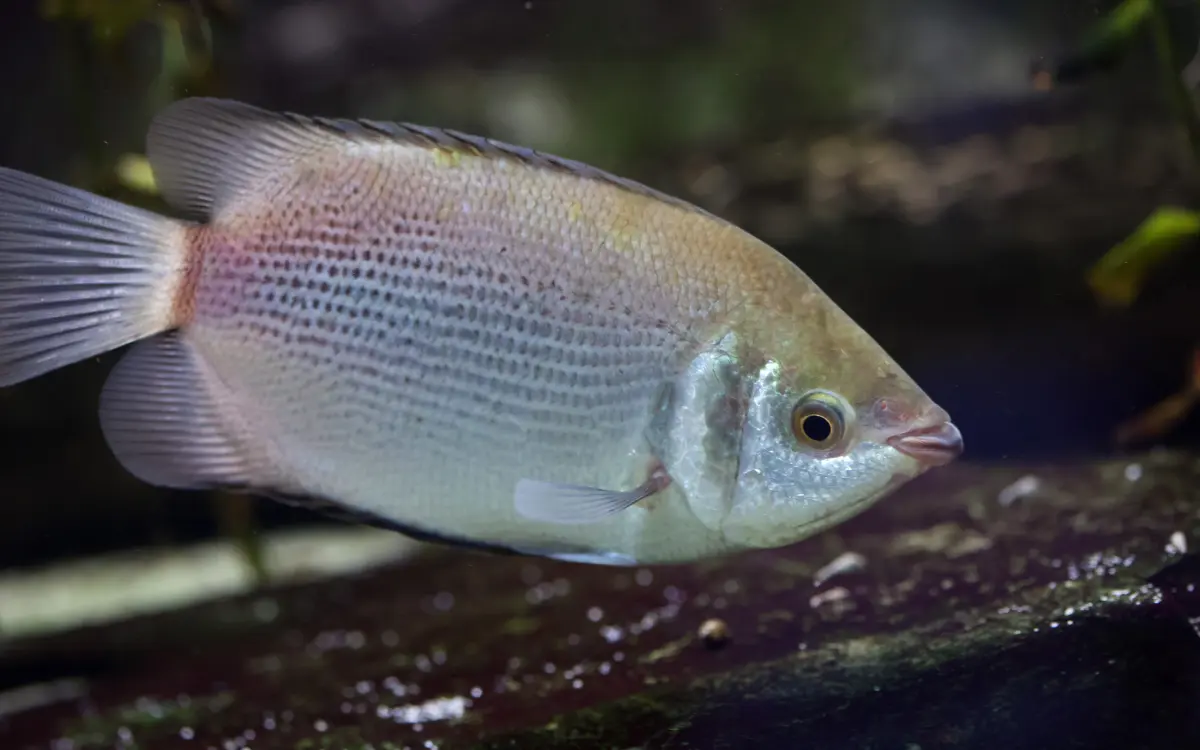Chili Rasbora Care Guide: Tank Setup, Feeding, Size & More
Chili Rasboras (Boraras brigittae) are tiny, bright red freshwater fish perfect for nano tanks. They grow to just 0.75 inches and are peaceful, making them ideal for planted aquariums with gentle tank mates. These fish thrive in soft, warm water with plenty of plants and dim lighting. In this care guide, you’ll learn how to set up the right tank, water conditions, food, and ideal tank mates to keep Chili Rasboras healthy, active, and colorful.
Chili Rasbora Overview
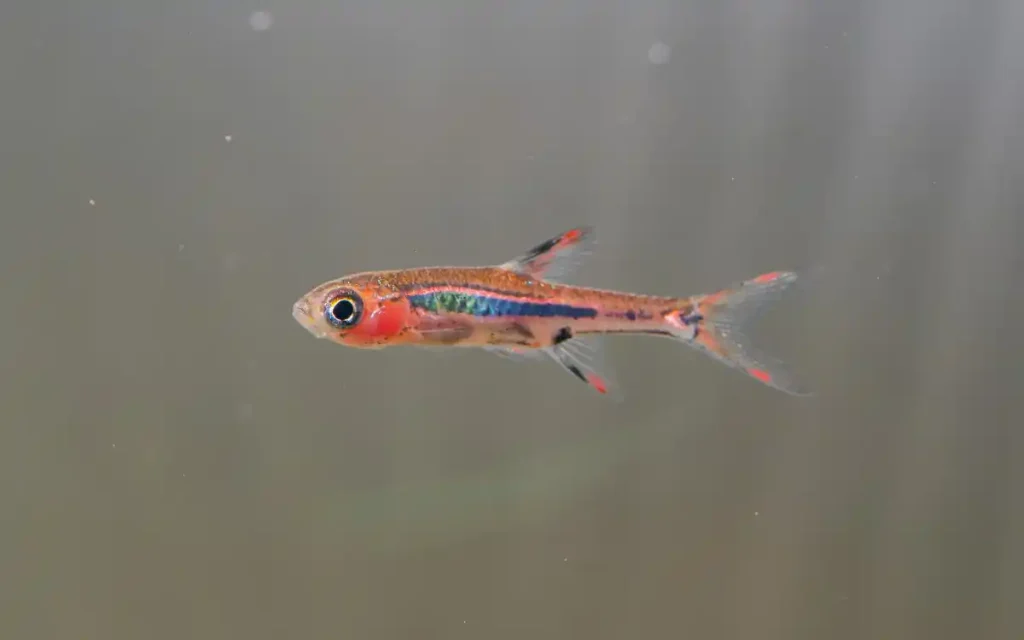
Chili Rasboras come from the slow-moving, blackwater streams of Borneo. They’re part of the Boraras genus and are known for their tiny size and striking red color. These fish are peaceful and active, often seen swimming in groups near the middle of the tank.
Quick Profile
| Feature | Details |
| Scientific Name | Boraras brigittae |
| Size | 0.6–0.8 inches |
| Lifespan | 4–6 years |
| Temperature | 74–82°F |
| pH Range | 5.0–7.0 |
| Tank Size | Minimum 5 gallons |
| Temperament | Peaceful, schooling |
Tank Setup for Chili Rasboras
Minimum Tank Size
You can keep a small group in a 5-gallon tank, but 10 gallons or more is better. These fish are active swimmers and love being in groups.
Substrate and Plants
Use a dark substrate to bring out their color. Add live plants like Java moss, Anubias, and floating plants. Plants help them feel secure and mimic their natural environment.
Lighting and Filter
Stick to low to medium lighting. A sponge filter is ideal—it keeps the water clean without creating strong currents.
Water Parameters and Maintenance
- Temperature: 74–82°F (ideal: 78°F)
- pH: 5.0 to 7.0 (soft, slightly acidic water)
- Water hardness: Soft to moderately soft
- Ammonia & nitrites: 0 ppm
- Nitrates: Below 20 ppm
Do 20–30% water changes weekly. Keep water changes gentle to avoid stressing these delicate fish.
Feeding Chili Rasboras
What They Eat
Chili Rasboras are micro predators in the wild. In tanks, feed them:
- Micro pellets
- Crushed flakes
- Baby brine shrimp
- Daphnia
- Microworms
Feed them twice a day in small amounts. Their mouths are tiny, so food must be bite-sized.
Behavior and Schooling
Chili Rasboras are peaceful and active. They do best in schools of 8 or more. In groups, they swim together and display their best colors. If kept alone or in small numbers, they may hide and lose color.
Tank Mates for Chili Rasboras
These fish are very peaceful, so they need gentle companions. Great options include:
- Ember Tetras
- Celestial Pearl Danios
- Pygmy Corydoras
- Otocinclus Catfish
- Cherry Shrimp (safe with adult shrimp)
Avoid aggressive or large fish. Even peaceful fish like Bettas can nip at them or cause stress.
Related Post: Cherry Shrimp Tank Mates
Breeding Chili Rasboras
Breeding them is possible but needs care.
Spawning Tips
- Raise the temperature to 80–82°F
- Feed live foods to condition them
- Add dense plants or a spawning mop
Males chase females and scatter eggs among plants. Remove adults after spawning—eggs and fry are tiny and may be eaten.
Raising Fry
- Eggs hatch in 2–3 days
- Feed infusoria, then baby brine shrimp
- Keep water clean and stable
Common Health Issues
Most health problems come from poor water quality or stress. Watch for:
- Faded color
- Clamped fins
- Lethargy
- White spots (Ich)
Prevention is better than cure. Keep water clean and test regularly. Quarantine new fish before adding them.
Is the Chili Rasbora Right for You?
Chili Rasboras are great for aquarists who love small tanks, planted aquascapes, and peaceful fish. They’re easy to care for if you provide stable, soft water and peaceful surroundings.
FAQs
How many Chili Rasboras should I keep?
Keep at least 6, but 10–12 is best for schooling behavior.
Do Chili Rasboras need a heater?
Yes. They’re tropical fish and need warm water between 74–82°F.
Can they live with shrimp?
Yes. They’re shrimp-safe, especially with adult shrimp.
Are they good for beginners?
Yes, if you can maintain stable water parameters.
Final Thoughts
Chili Rasboras are small, colorful, and peaceful fish that fit beautifully in nano or planted aquariums. They’re beginner-friendly but thrive best with consistent care. Keep their tank planted, water soft and warm, and enjoy watching their vibrant schooling behavior.

